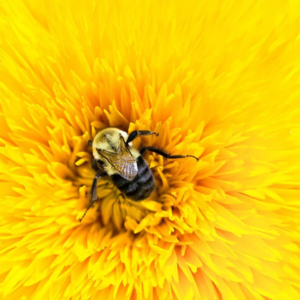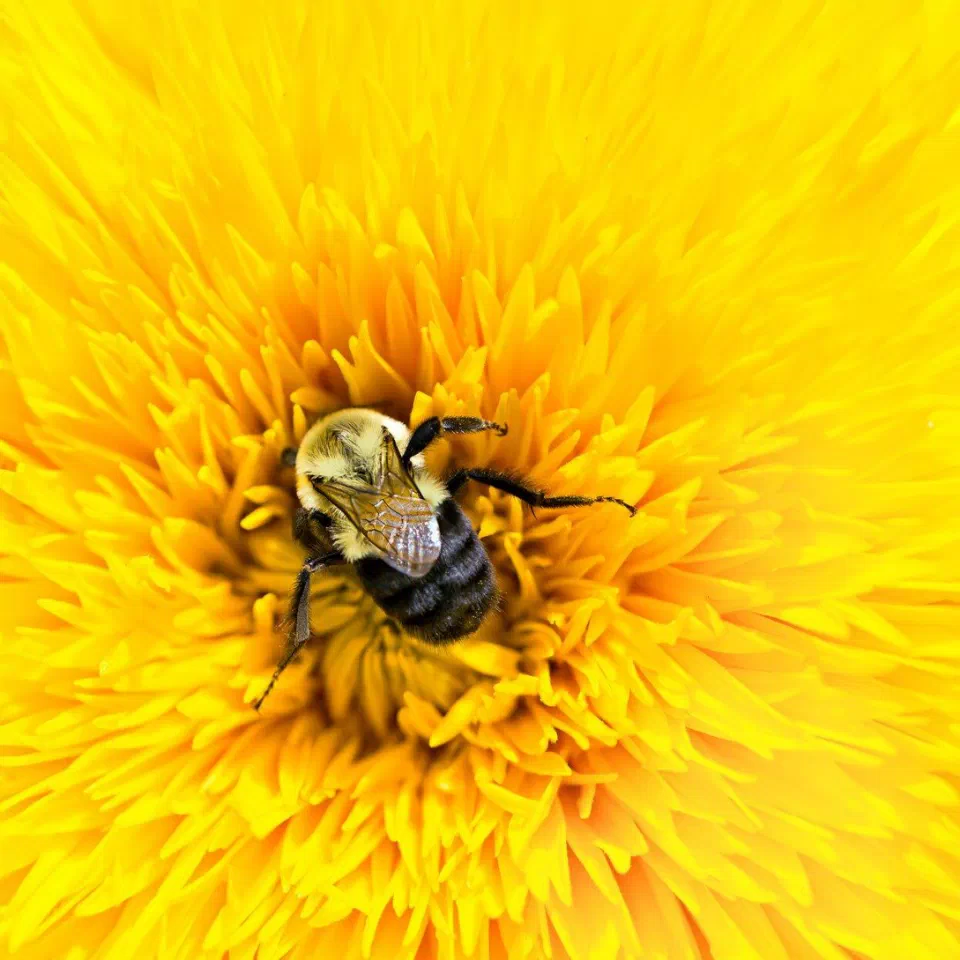 Pollinators are said to be responsible for one-third of the food we eat. Yet their populations are in decline. While the easiest thing we can all do is plant more flowers in more places, we can also aid researchers in their efforts to safeguard the bees. Here’s what the buzz is about.
Pollinators are said to be responsible for one-third of the food we eat. Yet their populations are in decline. While the easiest thing we can all do is plant more flowers in more places, we can also aid researchers in their efforts to safeguard the bees. Here’s what the buzz is about.
When people find out what Elaine Evans, Ph.D., does for a living, they inevitably ask, “How are the bees doing?” As an extension educator and researcher at the University of Minnesota’s Bee Lab, her job is to not only protect these pollinators, but to galvanize the general public to pitch in, as well. Statistics show that one out of every three bumble bee species is in decline. Honey bees, too: last year, U.S. beekeepers saw 44% of their colonies die off—due to climate change, habitat loss and infectious pathogens—the second highest colony mortality since 2010.
The good news, Evans says, is that anyone can pitch in to save the bees by simply snapping and sharing a photo. Crowd-sourcing efforts known as citizen science programs have volunteers collect data from their own backyards and share it with researchers around the globe. “Researchers can only cover a small part of the landscape by themselves,” explains Evans, “so having the general public out there taking photos or doing bee counts gives us vital information on endangered pollinators.” And participation in these programs is blooming. In the last five years, the number of bee sightings reported to the Bumble Bee Watch increased from 4,000 to 20,000 annually. Here are some ways you can get involved.
In July, you can submit photos and the number of bumble bees you spot via Backyard Bumble Bee Count’s online survey or app. Data from this project informs important research, like a study that was recently published in the journal Insect Conservation and Diversity on habitat requirements for two North American bumble bee species at risk of extinction.
BeeWise Honey Bee Pollen & Nectar Map
An estimated 75% or more of the world’s flowering plants depend on our pollinators. And catching bees in the act of collecting nectar or pollen is exactly what the BeeWise Honey Bee Pollen & Nectar Map initiative is about. Scientists hope that photo submissions that identify both the bee and flower species will help them learn more about bees’ preferred foraging conditions.
Keep your eyes peeled to record any and all sightings as part of an effort to track and conserve North America’s bumble bees. “With any luck, you might help us find remnant populations of rare species so we can try to intervene before they go extinct,” says Rich Hatfield, a senior conservation biologist who works on the Bumble Bee Watch program through the Xerces Society for Invertebrate Conservation.
Bee Informed Partnership
The nonprofit Bee Informed Partnership calls on beekeepers to collect and share details about how different factors like eating habits, temperature and disease impact their colonies’ health, which can then be used to keep everyone’s hives thriving. For example, the org’s mite check survey helps scientists learn more about varroa mite infestations that are threatening colonies nationwide.
Source: https://www.yahoo.com/lifestyle/33-food-disappear-without-bees-210738705.html

